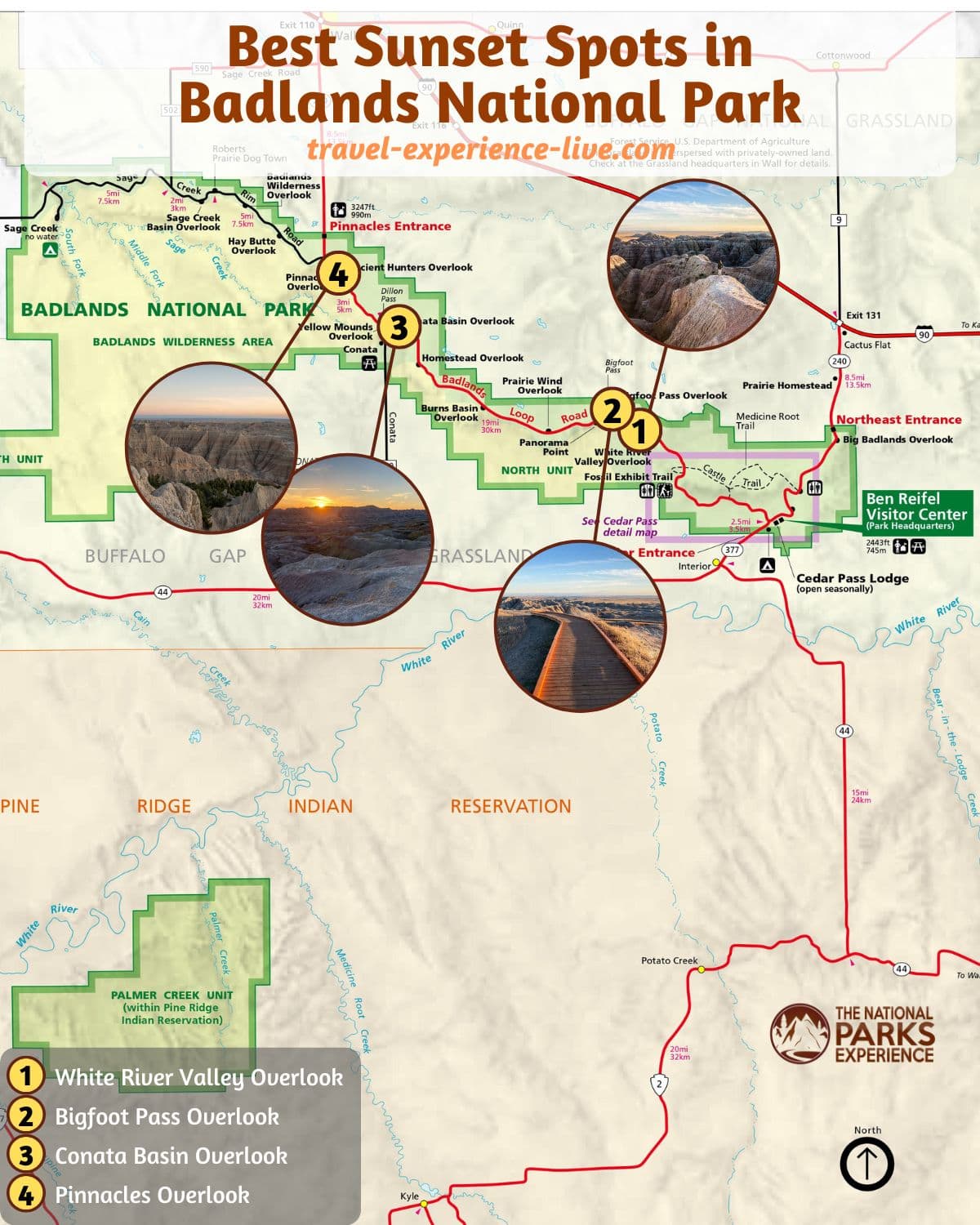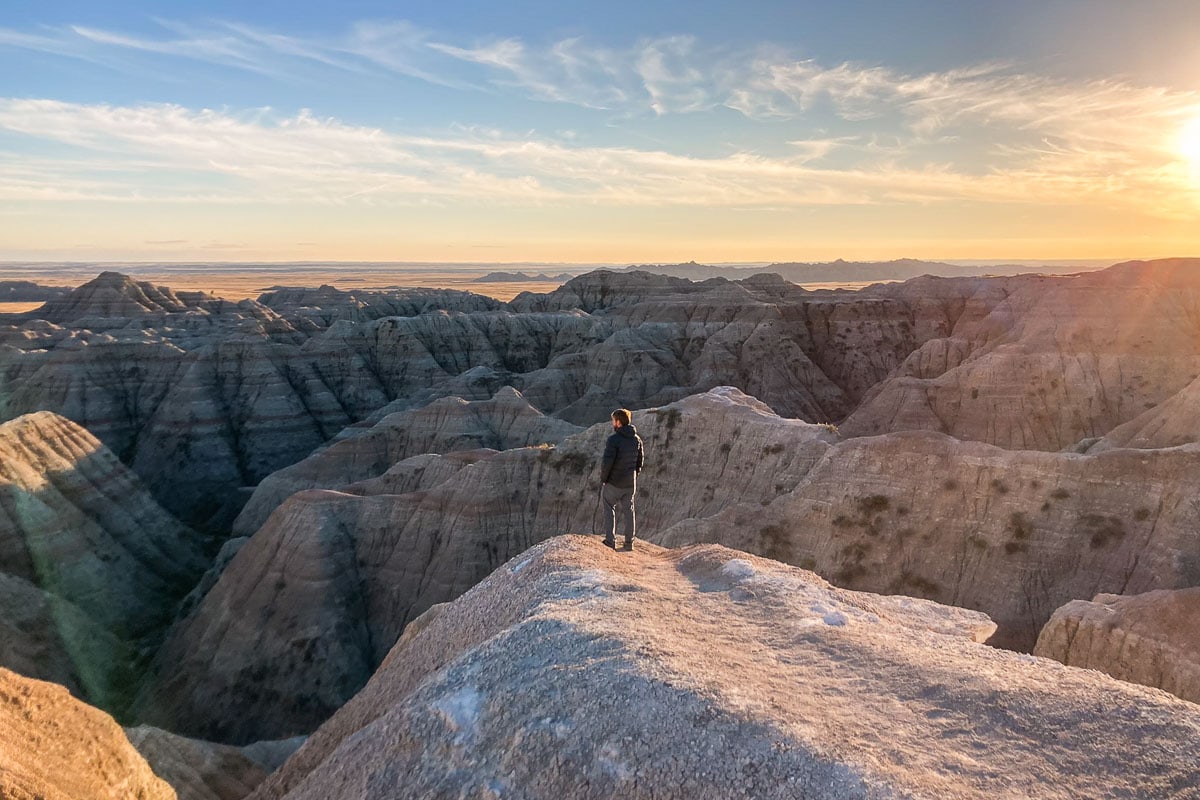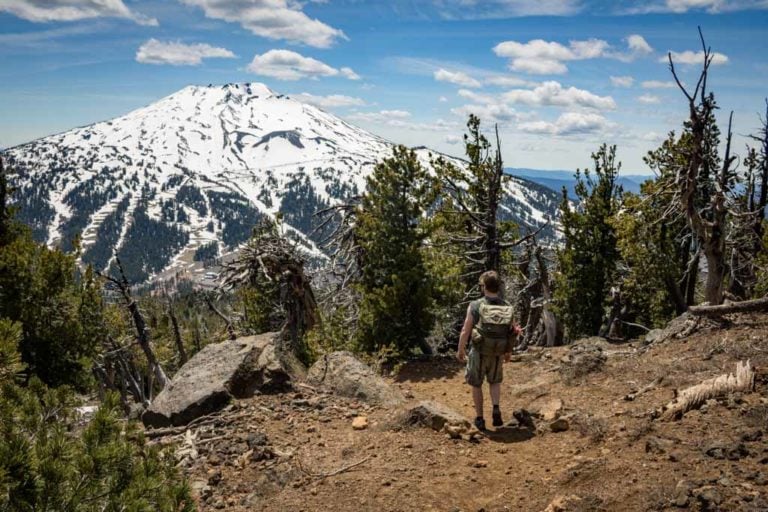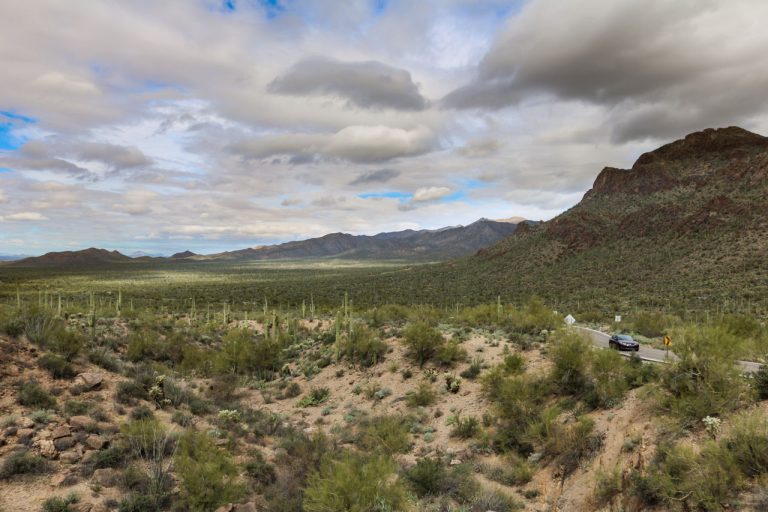Where to See the Sunset in Badlands National Park
On sunny afternoons, the landscapes of Badlands National Park can, although still spectacular, also be quite monochromatic. Sunset in the Badlands, however, is a completely different thing, the low-angled sun rays bringing out a magnificent palette of colors.
While the harsh midday sunshine hides the delicate colors of the Badlands, the gentle evening sunlight highlights a stunning spectrum of pastel hues.
At sunset, when the sun casts its beams across the rugged ridges and ravines of Badlands National Park right before dropping below the horizon, the Badlands showcase an amazing array of light orange, pretty pink and subtle purple.
Dusk in the Badlands also brings dramatic shadows, which create a marvelous three-dimensional landscape.
So, enjoying a sunset in the Badlands is undoubtedly one of the most popular things to do Badlands National Park, this breathtaking national park in South Dakota. Read on the see the best places to see the sunset in Badlands National Park.
This blog post about the best places to see the sunset in Badlands National Park contains affiliate links. You can read more about our Terms of Use / Disclosure here.
4 Best Sunset Spots in Badlands National Park
While sunrises in the Badlands are undeniably memorable, watching a Badlands sunset is as well.
I consider both to be part of the quintessential Badlands National Park experience, which is why I recommend spending at least one night in the area.
In the park, you can camp at the Cedar Pass or Sage Creek campgrounds, or stay at the Cedar Pass Lodge. Nearby, there are some excellent accommodations in Wall, particularly the Badlands Frontier Cabins.
Below, you’ll find the top spots to see the sunset in Badlands National Park. They’re all on the Badlands Loop Road, listed from east to west.
I wanted to make a point of mentioning that many viewpoints in Badlands National Park are amazing at sunset, including the east-facing overlooks. Those below are simply the places that face south and/or west, allowing you to enjoy the dramatic sunset shadows and colors of the Badlands .
I’ve kept the following list of best Badlands sunset spots quite brief because it’s virtually impossible to visit more than a handful of locations before the actual sunset, or “golden hour”, is over. (If you have multiple evenings in the park, however, feel free to explore beyond these spots, of course.) I suggest picking a few locations and spending more time enjoying the spectacular evening scenery, rather than rushing from one viewpoint to the next.
White River Valley Overlook
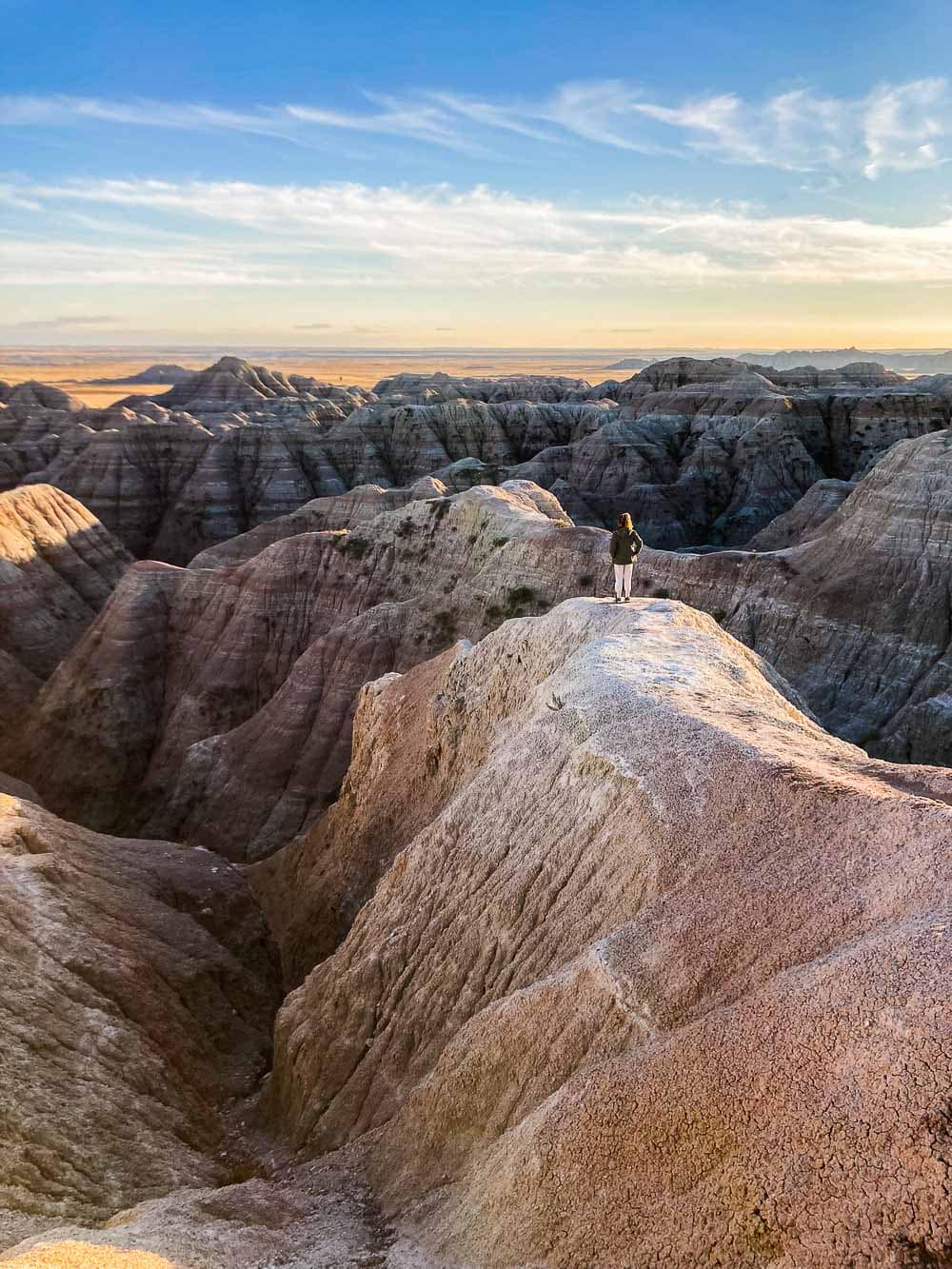
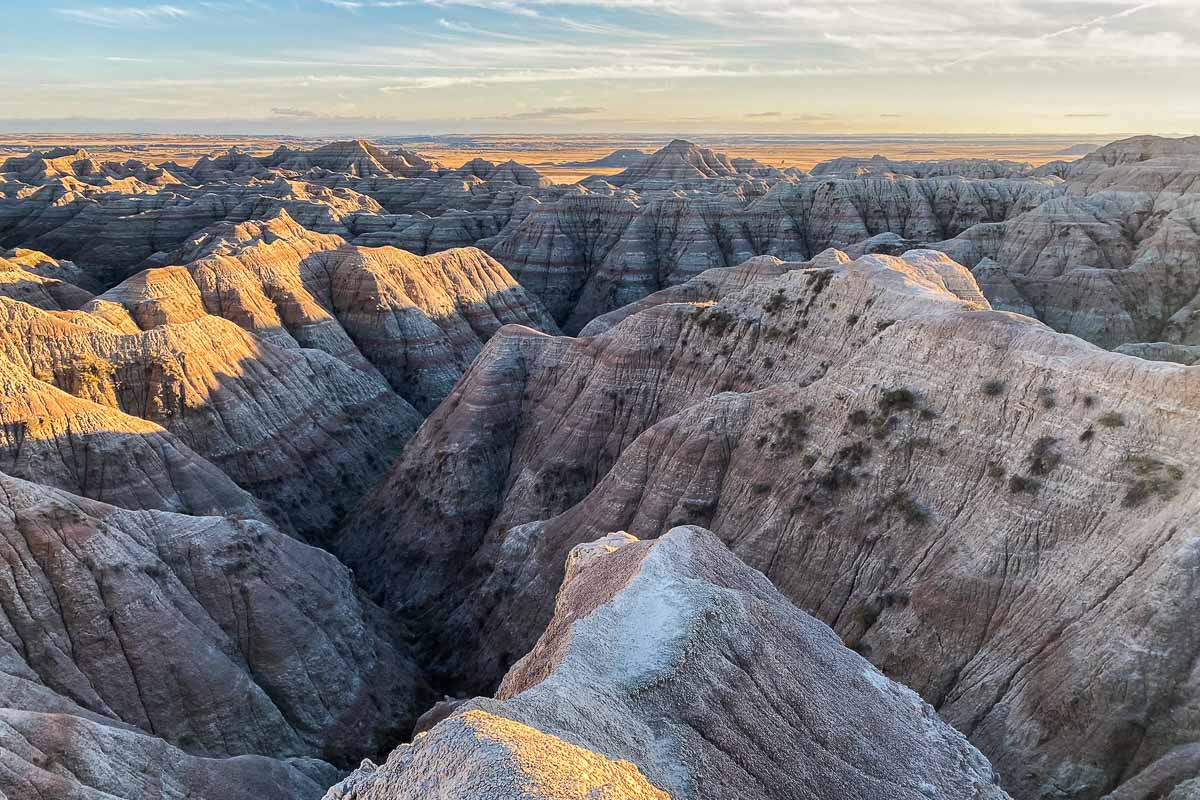
One of the best viewpoints in Badlands National Park in general, the White River Valley Overlook is especially spectacular at sunset.
When driving the Badlands Loop Road westward from Cedar Pass, this is the first overlook you’ll see. Facing south, the overlook offers a great view of the White River Group of Badlands, as well as of the White River Valley in the distance below.
This is a particularly great Badlands sunset spot for photos because there are several short social trails to the ends of ridges and buttes.
Disclaimer: Although it’s 100% allowed to walk pretty much anywhere in Badlands National Park, I can’t stress enough how important it is to exercise caution near steep drop-offs, ledges and cliffs like these.
Bigfoot Pass Overlook
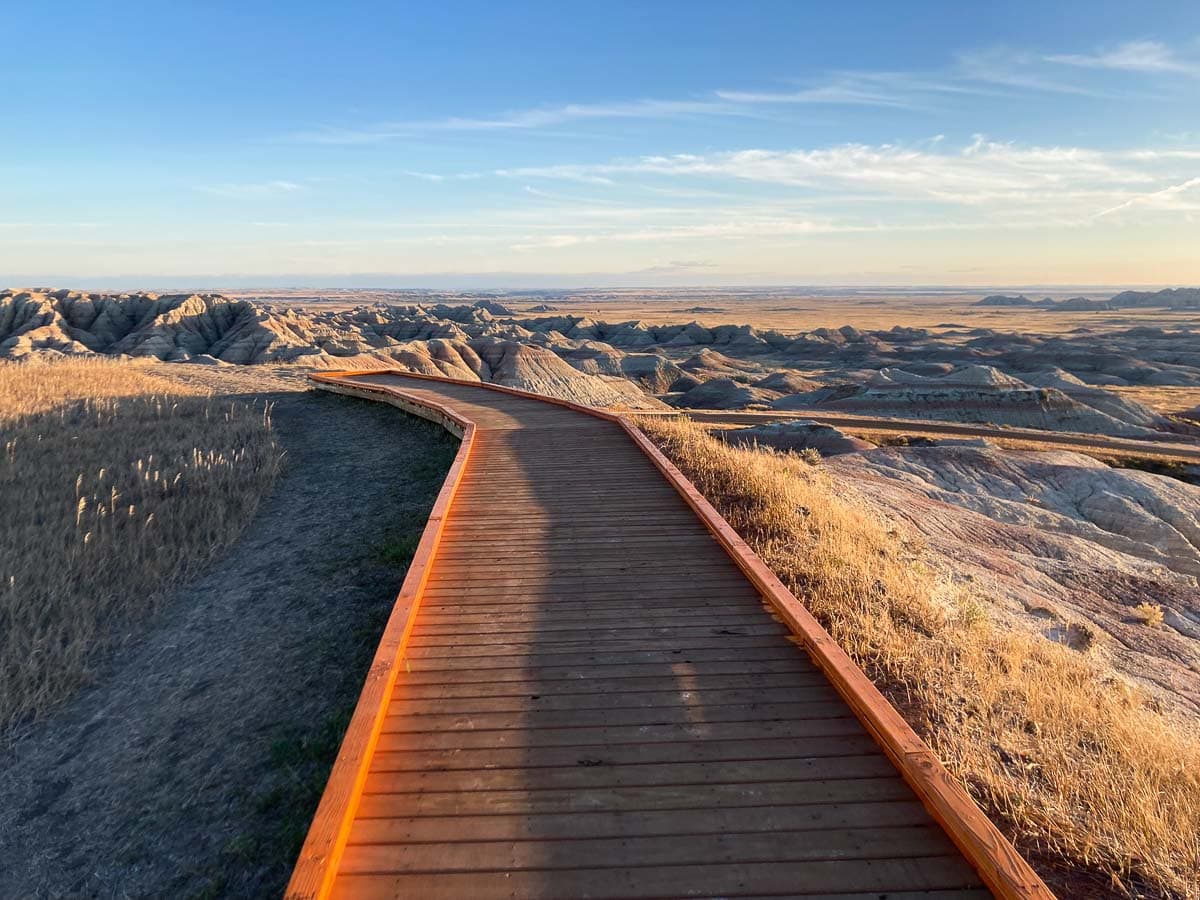
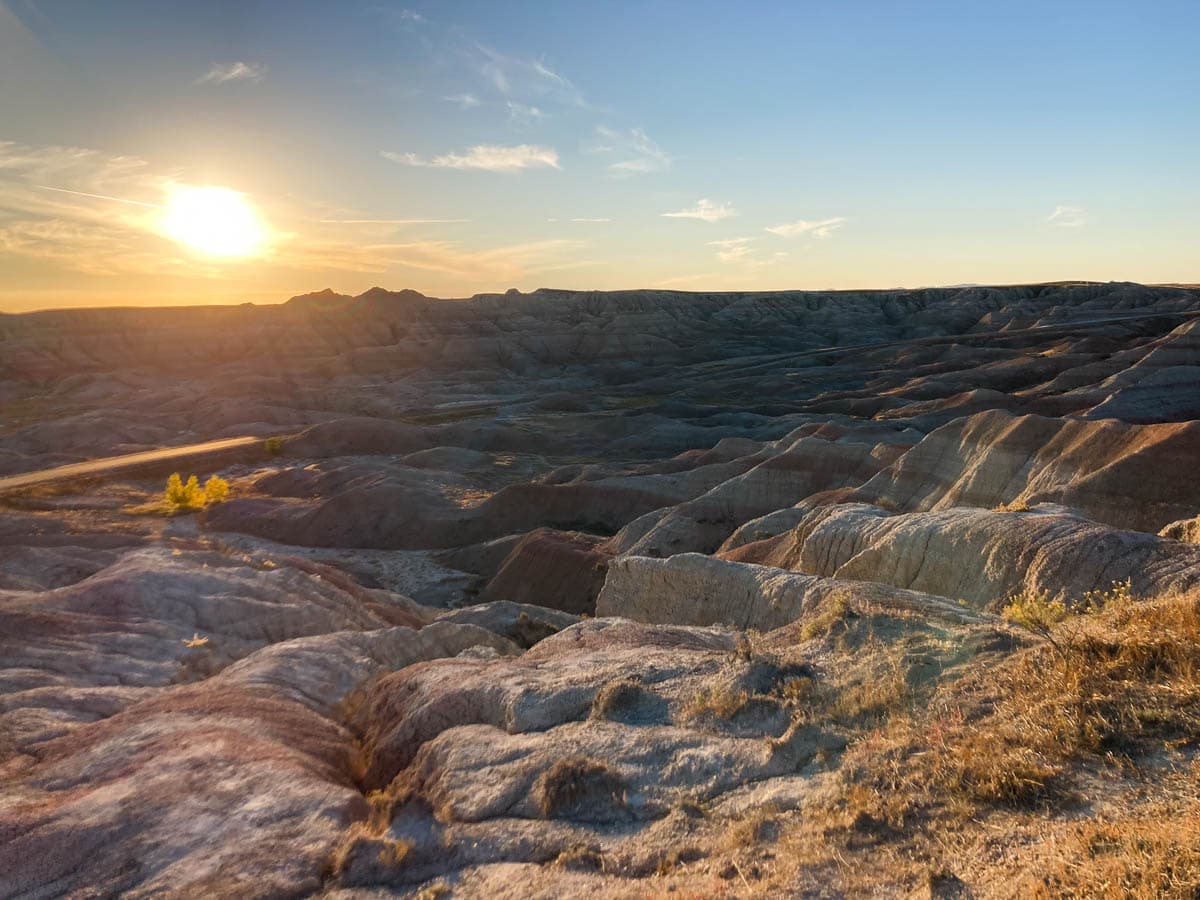
Situated near one of the park’s few picnic areas, the Bigfoot Pass Overlook is both a spectacular sunset spot and a historically significant site.
From the end of the boardwalk, you can enjoy a magnificent view of the Badlands and the Badlands Loop Road that cuts through them. It’s a fine view all day long, but especially great in the evening.
Besides the excellent sunset scenery you can enjoy here, there’s some history associated with the area, too.
Bigfoot Pass is named after the Miniconjou Lakota Chief Spotted Elk, who was also called Big Foot. He used this pass through the Badlands to escape the U.S. Army on his way to Chief Red Cloud’s Pine Ridge Reservation, before being captured, escorted to Wounded Knee and massacred.
“After the murder of Sitting Bull on December 15, 1890, approximately 200 Hunkpapa Lakota fled to join Chief Spotted Elk, also known as Big Foot, and his band of Miniconjou Lakota at the Cheyenne Reservation. This group departed for the Pine Ridge Indian Reservation on December 23, seeking refuge with Chief Red Cloud. Five days later, a detachment of the 7th Calvary met the traveling group and escorted them to Wounded Knee Creek. The next day (December 29, 1890), tensions rose and the 7th Calvary massacred an estimated 150-300 men, women and children at Wounded Knee.”
– National Park Service
See More National Park Service Units That Preserve Native American Heritage and History Here
Conata Basin Overlook
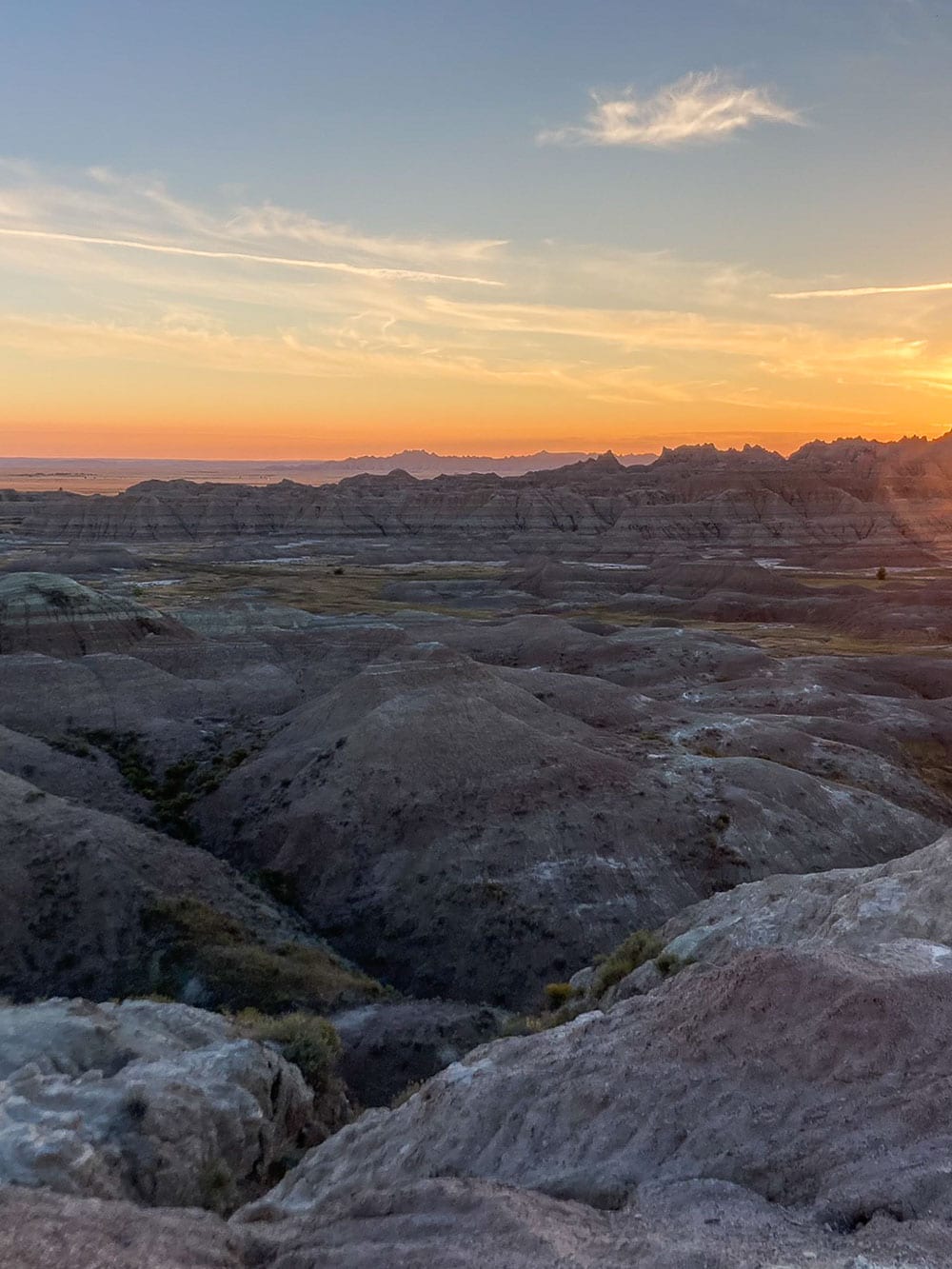
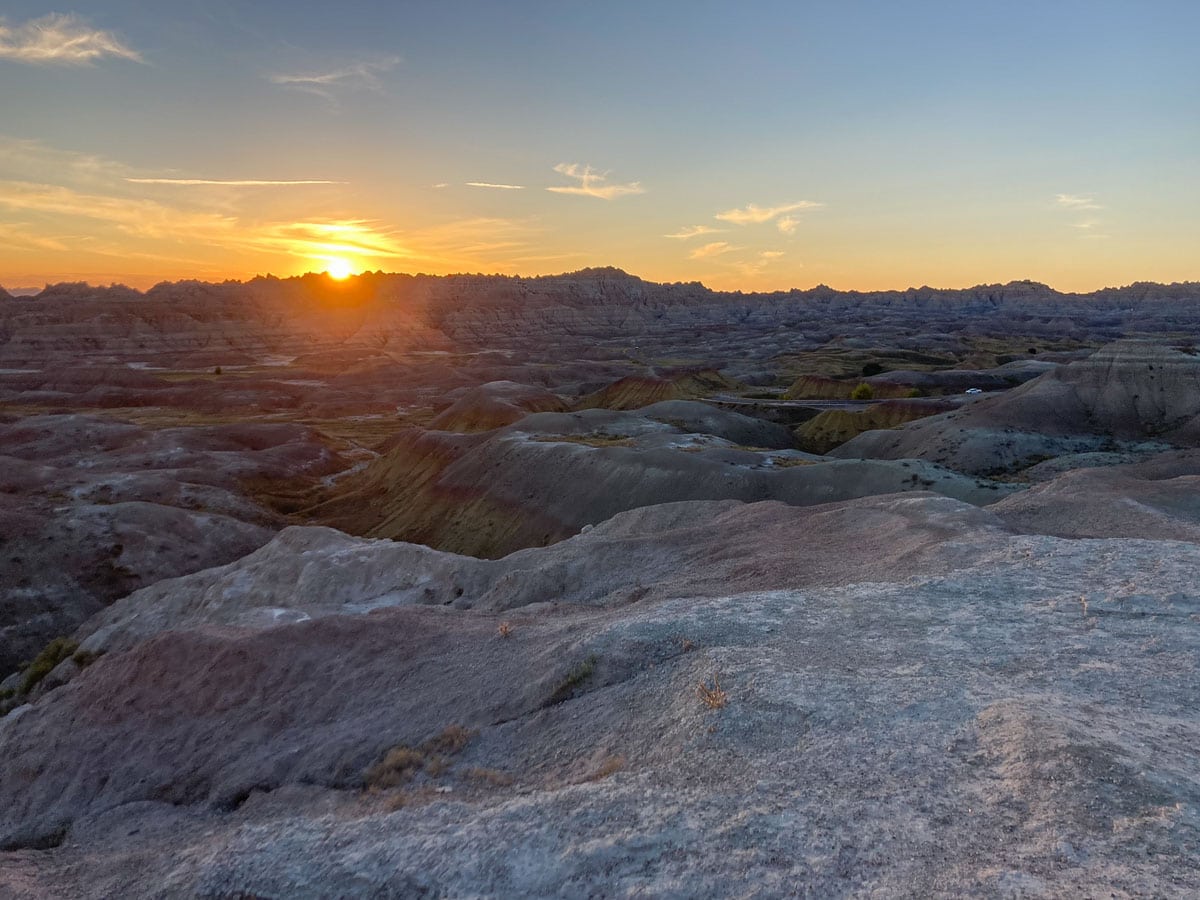
One of only a few west-facing viewpoints in the park, the Conata Basin Overlook is a great place to catch a Badlands sunset.
At the end of a very short boardwalk, you can take in a wide view of the “paleosols” of Badlands National Park. Those paleosols are one of the most remarkable features of the park, ancient rock layers that display a vibrant color.
From the overlook, you can clearly see the Yellow Mounds and the Interior Paleosol.
In addition to the noteworthy paleosols, the Conata Basin Overlook is also extraordinary because it provides a full geologic cross-section of Badlands National Park. Literally every geological layer is visible here.
Pinnacles Overlook
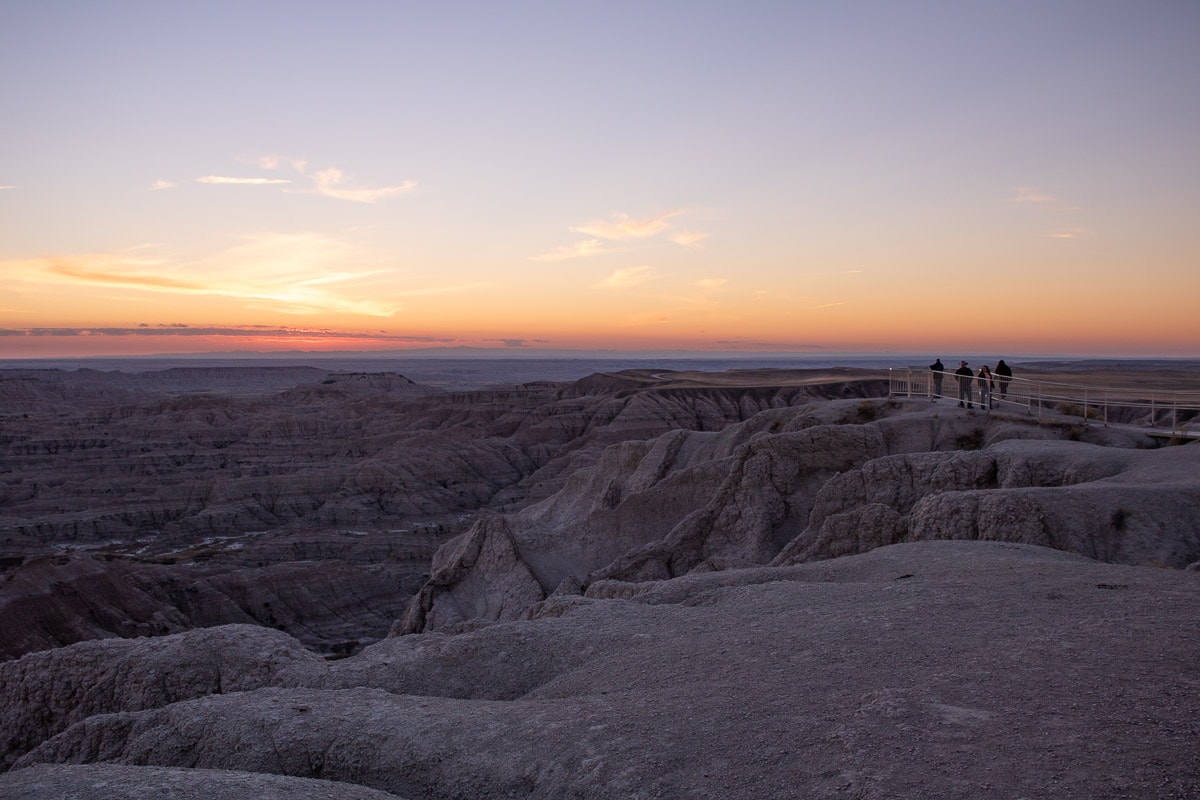
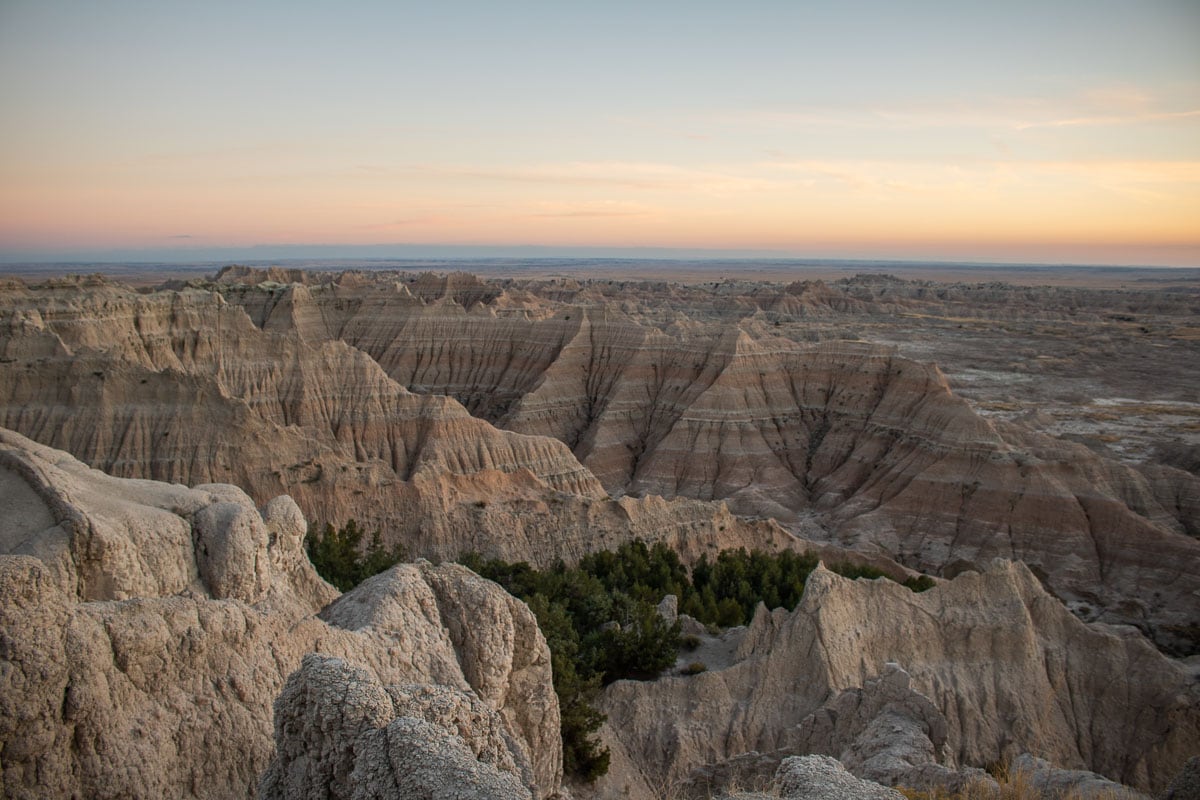
The National Park Service itself says that “Pinnacles Overlook has sweeping views and faces south, making it a great sunset destination.”
And indeed, this is arguably the most popular overlook in Badlands National Park, partially thanks to its expansive parking lot, which allows for lots of visitors. Additionally, this is the highest point in the park’s North Unit, allowing for expansive views.
Located near the western end of the Badlands Loop Road, the panorama—it truly is a 180-degree vista—takes in the western Badlands, but also the Sage Creek Wilderness Area and, on clear days, even the Black Hills.
If that’s not enough to make this one of the best places to see the sunset in Badlands National Park, it’s also a great place to see some of the park’s wildlife in late afternoon.
“Bison might be visible in the distance, in the valley below or in the upper prairie to the northwest,” the Park Service says. The most likely animals you’ll see here, however, are bighorn sheep, which tend to gather (and even lamb) here.
Map of the Best Badlands National Park Sunset Spots
